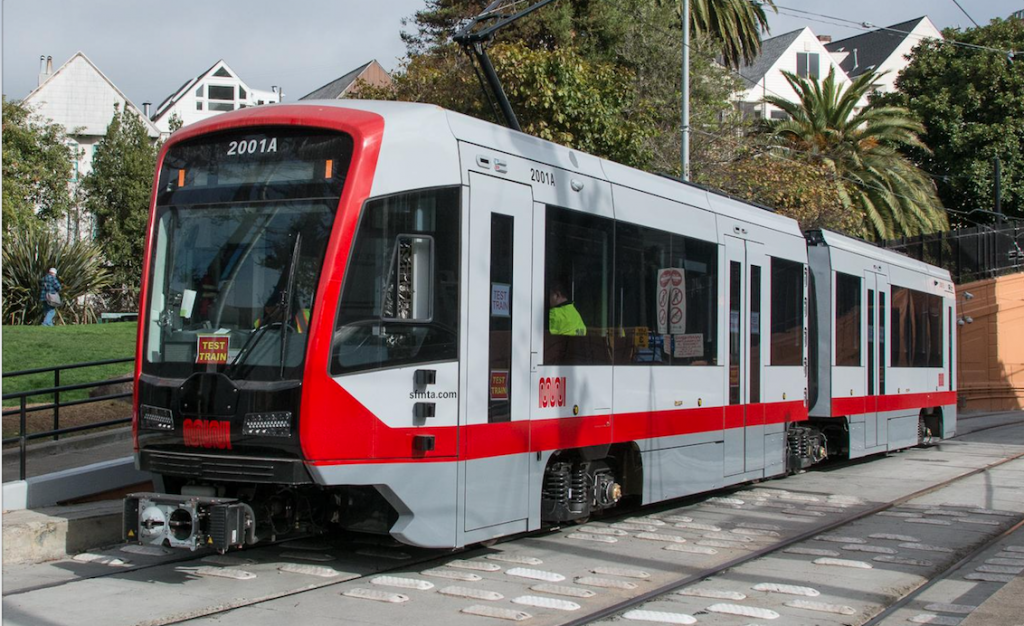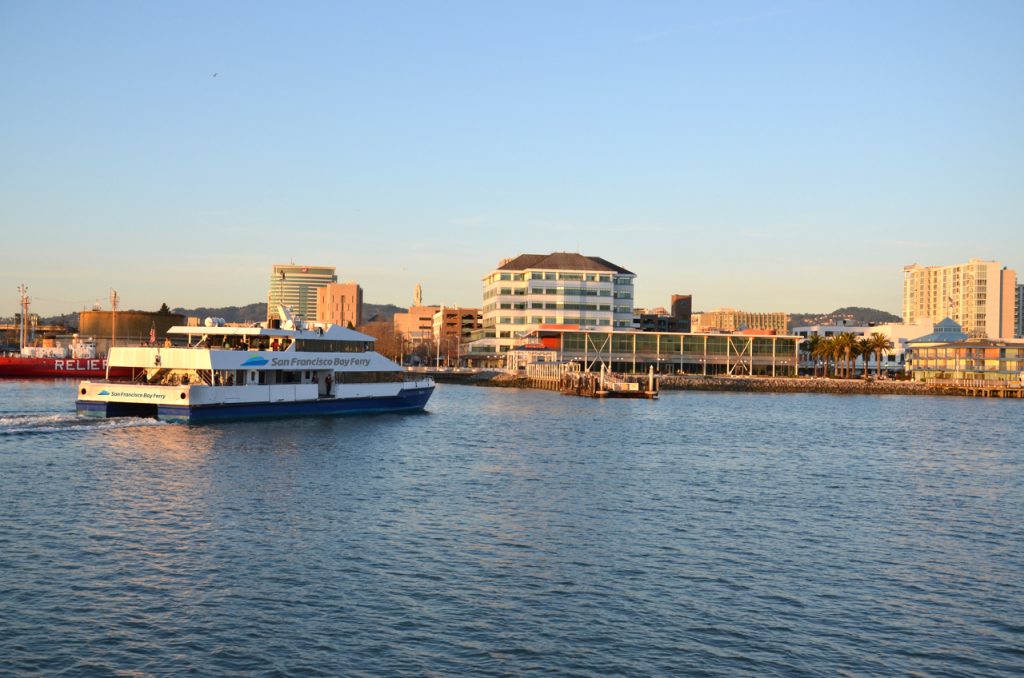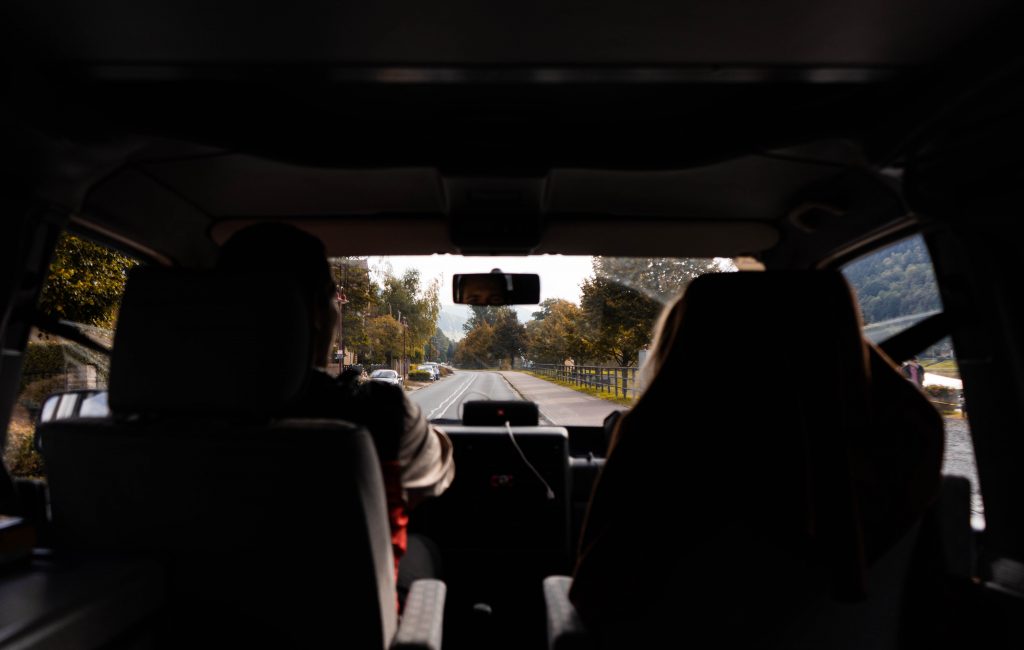San Francisco covers an area of just under 50 square miles but with a population of nearly 890,000, it is the second most densely populated U.S. city. The Golden City may rank fifth in the world for traffic congestion but if you plan well there are plenty of transport options to whip around the city in as opposed to jumping behind a wheel. Due to the current coronavirus pandemic, many transport companies have adapted their routes and altered their services, so even if you have been living in the city for many years, your regular commute may have been disrupted.
- BART is a great train network for servicing the city’s hotspots

Bay Area Rapid Transport is one of the most established train networks in the San Francisco Bay Area. It connects San Francisco International Airport and Oakland Airport and many commuters agree this is the cheapest way to get into the city. But once in the city, BART doesn’t have a plentiful number of stops. It may be great as a broad service that connects popular areas such as Mission District, Union Square and downtown but if you want to reach specific areas outside of the major hotspots then other transit methods are more suitable.
BART operates on a “tag and go” system with a Clipper card but you can also buy individual tickets or from vending machines. Fares vary but it costs $5.70 to travel from Richmond to South San Francisco for example.
The trains ordinarily run between 5:00am and midnight Monday to Friday, 6:00am on Saturday and 8:00am on Sundays but due to the current pandemic the service now suspends at 9pm each day. BART has launched a 15-step plan to make sure all their trains comply with covid-19 restrictions and hygiene rules.
- Muni is the best for commuting

Muni, short for San Francisco Municipal Transportation Agency, is the seventh largest transit system in America. The network uses a combination of metro, subway, light rail and bus services, gives access to areas all over the city and runs 24/7 with the Muni Owl Networking taking over at night. Muni also owns the famous cable cars and historic street cars which are two of the most popular tourist attractions in the city.
For everyday use, Clipper cards can also be used or you can purchase individual tickets when you need. A single ride costs $2.50 with a Clipper card or $1.25 if you qualify for a discount. If you are visiting San Francisco then investing in a Muni passport is worthwhile as it is more cost-effective and will grant you flexibility when travelling.
Muni has made numerous restrictions during the pandemic such as reduced departure times and specific street closures. For all updates, click here.
- Start your day right with a ferry ride

Commuting by ferry is more costly than other modes of transport and does not have as many departure times but starting your day with beautiful views and fresh air could do wonders for your work ethic. From $10 one-way, many ferries allow access between hotspots such as Richmond, Sausalito, Oakland and San Fran Bay. One of the most popular companies, the San Francisco Bay Ferry, offers a comprehensive schedule on their website which can be found here.
Due to the pandemic, many ferries are running on a limited schedule and some have even temporarily halted their services so please check the relevant company’s website in advance for updates.
- Walking is the cheapest option

Thinking of San Fran immediately conjures images of cable cars almost vertical on hillside but there are many areas such as the waterfront, Chinatown and North Beach that are relatively flat. Depending on the distance between where you live and work, walking is definitely a viable commuting option or you could combine walking with another mode of transport such as bus, bike or scooter. Check out local apps like Float to help devise a multi-modal journey.
For travellers, walking around the different suburbs will give you the best understanding of the city layout and allow you to explore all its nooks and crannies.
- Biking is easier than you think and is (sometimes) quicker

Given San Fran is home to Silicon Valley and the birthplace of many mobility start-ups, cycling’s popularity has imploded in the last decade and numerous companies launched dockless pay-as-you-go bike schemes to cater to the demand. If you have a charged phone and the necessary apps you can easily access Lyft’s Bay Wheels and Uber’s JUMP and you can easily plan your commute with SFMTA’s bike network map.
There are also many bike rental shops if you’d rather pay a flat fee ($30 on average) for a day’s rental. Check out San Francisco Bicycle Rentals on Jefferson Street or Golden Gate Bridge Bike Rentals on Lombard Street.
Many streets have designated cycle lanes that make biking fun and safe. If you’re looking to get out and about for a safe activity, one of the most scenic rides is from Embarcadero to the Golden Gate Bridge. This ride takes half an hour and offers majestic views across the harbor. Since the roads are fairly quiet at the moment due to covid restrictions it is a great opportunity to commute or explore the city by bicycle.
- Try and avoid driving and opt for ridesharing or carpooling instead

San Fran is one of the most congested places in the world and due to this, many locals acknowledge commuting by car is incredibly frustrating.
Taxis are also very pricey and so a better option is either ridesharing which can be done with companies such as Uber or Lyft. Bear in mind that most companies have temporarily suspended some of their ridesharing services such as Uber Pool due to safety concerns amidst the current pandemic but this will start up again in the future.
Carpooling is another option and Casual Carpool is a grassroots system that originated in San Fran. Eager commuters just have to stand at the designated corner in the East Bay and they’ll get picked up by drivers on the way into town for a measly $1. This is really appealing as users can use the carpool (HOV) lanes between Monday and Friday to whip across the Bay Bridge in no time at all.
- Invest in a Clipper card

Clipper cards can be used to access all of the aforementioned public transit options in the Bay Area including BART, Muni and ferries. There are discounts available for youth, seniors, low-income adults and anyone with a disability.
The cards are straightforward to use. The user simply waves the card at the scanner each time they enter a station or vehicle and the fare will be deducted accordingly. You can reload the card in person at a ticket machine or set up an automatic payment online.
Due to coronavirus hardship, SFMTA has created an Essential Trip Card for senior adults (aged 65 and older) or anyone with a disability. This card will subsidize between two and three taxi trips per month for anyone who needs to make an essential trip such as visiting the grocery store.



